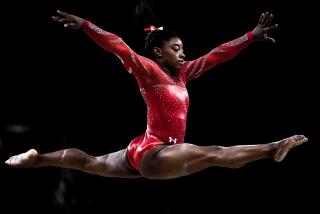Jack Cardiff in the spotlight
Matthew Libatique, cinematographer on such movies as “Black Swan,” “Iron Man” and “The Fountain,” follows a certain routine before he starts a film. He studies paintings and photographs for inspiration and rewatches two British classics: 1947’s “Black Narcissus” and 1948’s “The Red Shoes.”
Those two films, directed by Michael Powell and Emeric Pressburger, were visually arresting thanks to cinematographer Jack Cardiff, whose nine-decade career in movies began with silent films and lasted into the 21st century.
It’s the job of a cinematographer (also known as director of photography) to work with the director to realize a scene. The cinematographer selects the film stock, lens, filter and lighting and oversees the camera and lighting crew. Challenged to keep pace with rapidly evolving camera, lighting and color technology, Cardiff became known as a master of his craft, and particularly groundbreaking for his vivid use of Technicolor.
“From a lighting standpoint, ‘Black Narcissus’ was ahead of its time,” Libatique, 42, says of the melodrama about a group of nuns in a convent near the Himalayas. Although Cardiff embraced shadow, he adds, “it’s not a noir. It is a painting. It’s a Vermeer, a Rembrandt. He was making films that actually had drama and close-ups other than just expression on people’s faces.”
Cardiff, who died two years ago at the age of 94, is the subject of a new documentary, “Cameraman: The Life and Work of Jack Cardiff,” opening in theaters Friday. Filmed primarily between 1997 and 2000, the movie features the lively, funny Cardiff as he discusses his work on “Narcissus” (for which he won his only Oscar), as well as “Red Shoes,” “War and Peace,” “The African Queen,” “Barefoot Contessa” and even “Rambo: First Blood Part II.”
The film includes clips from the 2001 Oscar telecast, when Cardiff became the first director of photography to be given an honorary Oscar. (Cardiff also took on directing, and earned a best director nomination for his 1960 adaptation of D.H. Lawrence’s classic novel “Sons and Lovers.” Perhaps not coincidentally, but a bit ironically, the black-and-white film won the Academy Award for cinematography by Freddie Francis.)
Cardiff embraced chiaroscuro lighting in his films, offering strong contrasts between light and dark. In “Black Narcissus,” for example, there is an overhead shot of the dining area he lit so the shadow of the cross would appear over the nuns. And then when one of the nuns becomes sexually crazed, she appears out of the shadows in the convent bell tower wearing a vivid red dress and blood-red lipstick.
For the finale, in which a woman charges a chaste nun (Deborah Kerr), Cardiff used a fog filter, giving the shadows a green tinge that clashed with the heightened reds and made the scene more dramatic and unsettling.
“I think Jack was an artist,” said Craig McCall, director of “Cameraman.” “I wanted to inspire people with the documentary. Jack had no formal education. He never got a piece of paper in his life to say what he was, yet he was one of the greatest communicators behind the scenes. I am not actually saying that Jack is the greatest cinematographer in the world — that’s a silly statement — but he had a very distinct place in film history and inspired a lot of people.”
John Bailey, 68, cinematographer on films including “The Big Chill” and “As Good as It Gets,” remembers being stunned when he first saw “Black Narcissus” and “Red Shoes,” a ballet melodrama. “I had seen them before I had ever gone to film school and didn’t know much about cinematography,” he said. “But the way those films were lit and composed … they just jumped off the screen.”
The influence of “The Red Shoes” on Libatique and director Darren Aronofsky is evident in their most recent collaboration, “Black Swan,” for which the cinematographer earned his first Oscar nomination.
“Clearly, some of the stage lighting was influential for me,” says Libatique. “He was not afraid to underexpose a face. He played with shades of gray; not everything had to be in a key light.” But even more important to them was Cardiff’s use of the subjective camera — when the lens takes on the point of view of a person. (In “The Red Shoes,” the camera is used to reflect what the ballerina, played by Moira Shearer, is seeing as she is turning on stage during a performance.)
He and Aronofsky replicated that subjective shot with Natalie Portman as the ballerina. “It was our one place we could do a literal homage to the film,” Libatique said.
More to Read
The biggest entertainment stories
Get our big stories about Hollywood, film, television, music, arts, culture and more right in your inbox as soon as they publish.
You may occasionally receive promotional content from the Los Angeles Times.











